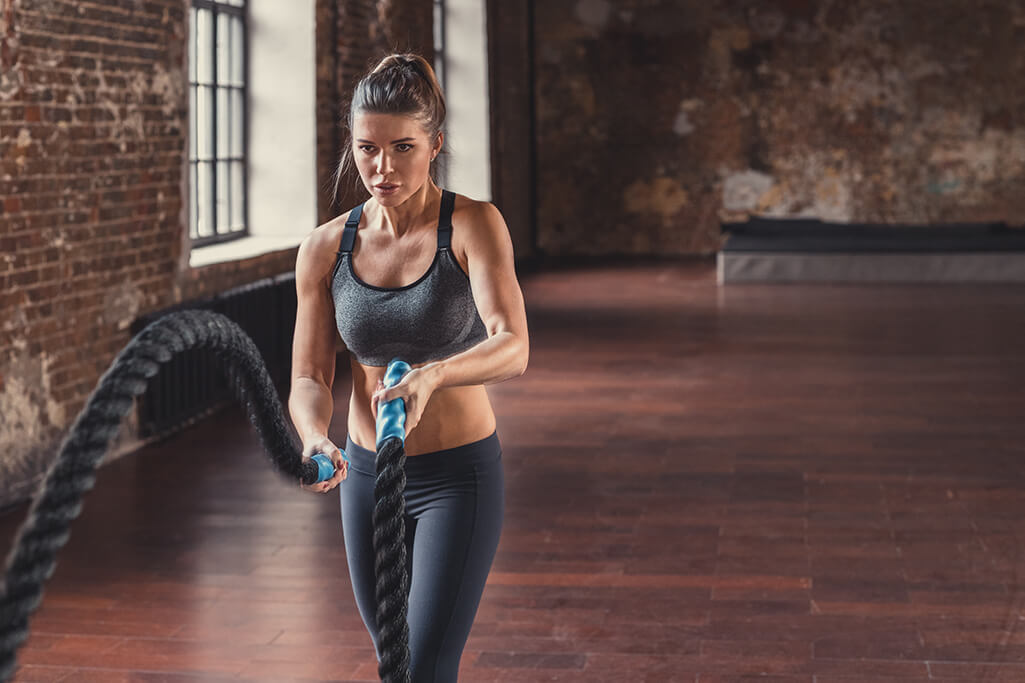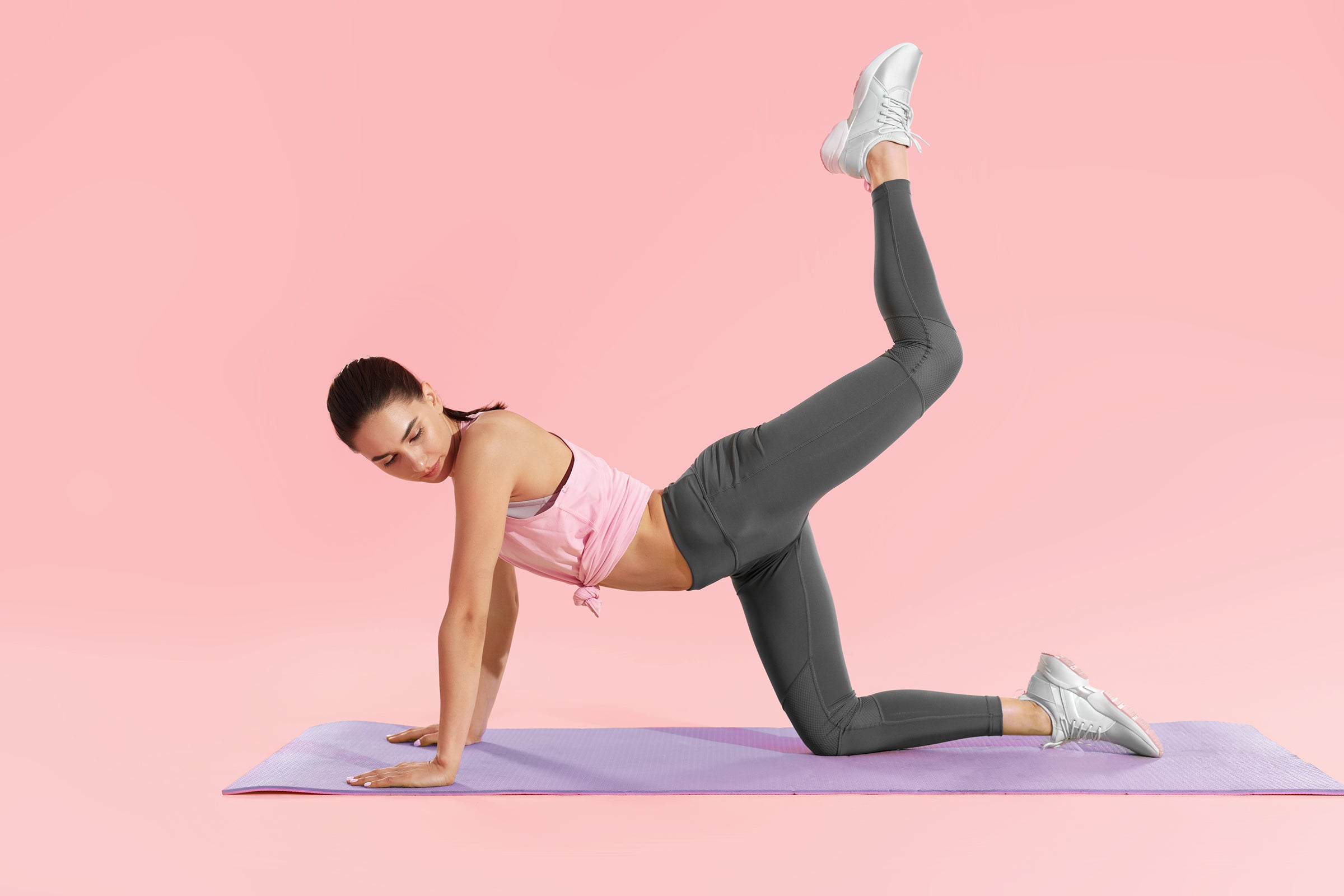Burn More Calories When You Strength Train


Most people think that endurance exercise, like running, cycling, or brisk walking, is most effective for fat loss. Yet studies reveal weight training can be effective too. High-intensity strength training is a style of training where you perform short, intense, and highly-focused blocks of weight-lifting, with a short recovery period between each block of work. A study showed that strength training burns twice the number of calories relative to what researchers previously thought. The discrepancy comes from the way people measure calorie burn during strength training. It's an anaerobic exercise, and they use oxygen consumption during training to measure calorie expenditure. That works for determining calorie expenditure for aerobic exercise but is less accurate for anaerobic workouts like strength training.

Plus, if you lift weights with intensity using a challenging resistance, weight training creates an afterburn, where you burn more calories even after your workout is over. Research shows the added calories you burn after a heavy strength-training workout can continue for 24 hours or longer. You don't get that when you walk or run at a moderate pace. Plus, strength training makes you stronger and builds a healthier, more attractive physique.
You can boost the calorie burn when you lift weights or work your body against resistance by making five changes to your training routine.
Do More Compound Exercises

If you're trying to get leaner, most of the exercises you do should be compound movements, those that work more than one muscle group at a time. The more muscle groups that contract simultaneously, the more calories you'll burn. Examples of compound exercises that work multiple muscle groups are deadlifts, squats, lunges, push-ups, pull-ups, bent-over rows, and bench press.
In contrast, those that work a single muscle group, known as isolation exercises, burn fewer calories. Examples are triceps kickbacks, biceps curls, leg extensions, leg curls, and calf raises. These exercises isolate a single muscle group but don't give you a lot of calorie burn for the time you spend doing them.
Focus on Large Muscle Groups

The larger the muscles you work, the higher the calorie burn. The largest muscles are in your lower body. Put that to good use by doing a variety of exercises that target the muscles in your legs and lower back using a challenging resistance. By doing this, you'll hit the larger muscle groups and burn more calories. Squats and deadlifts are some of the best examples of calorie-blasting exercises. The largest muscle in your lower body is your glutes, which gives your butt its shape. So, don't forget to include movements that work your glutes hard. Hip thrusts are one of the most effective exercises for targeting the glutes.

How about your upper body? When the large muscles in your back contract, they burn lots of calories. The most significant muscle in your back is the latissimus dorsi muscles, also known as the lats. Some of the best exercises for working these muscles are rows and their variations. So, add barbell rows and bent-over rows to your routine. Include some pulling exercises that work the lats too. Two of the best are pull-ups and overhead pulldowns using a cable machine.
Incorporate Cardio Into Strength Training

When you strength train, you spend at least a minute or two between sets to allow the muscles you just worked to recover. During this time, most people stand around. Why not use that time to burn calories? If you just did an upper strength-training set, your upper body is fatigued, but your lower body isn't. So, do light cardio during the rest between strength sets. For example, jog in place, do jumping jacks, butt kicks, high knees, or a set of burpees. You'll get more cardio benefits too.
Go For Max Effort

For a high-intensity workout to be most effective, the ‘work’ periods need to be done near your maximal effort. This is your maximum effort, don’t compare yourself to anyone else. Complete the exercises at the maximum pace you can maintain while still focusing on maintaining proper form. Allow for rest periods of 30-60 seconds between each work period — this is enough time for your body to recover, and you’ll reap the benefits of keeping the intensity high.

You can take a shorter rest for a short workout, but for a longer workout, allow for a longer rest of 1-2 minutes so you can sustain the effort and correct technique for the whole session.
We don’t recommend doing high-intensity resistance training every day! Depending on what other training you are doing, allow three or four days to recover between sessions, and remember to listen to your body. You might schedule some active recovery on your rest days, or incorporate other training styles like low-intensity cardio.
Drink Green Tea Before a Workout

A few cups of green tea before a workout could help you burn more calories when you strength train. Research shows the combination of antioxidant catechins and caffeine in green tea boosts the activity of fat-burning enzymes that help you get leaner. These components also activate your sympathetic nervous system and help you stay more alert during a workout. In addition, some research shows that green tea reduces carbohydrate absorption from the digestive tract.
The Bottom Line

Now you know how to burn more calories when strength training. Take advantage of it and get leaner as you get stronger. It's a great way to boost the benefits of each workout you do.




Leave a comment